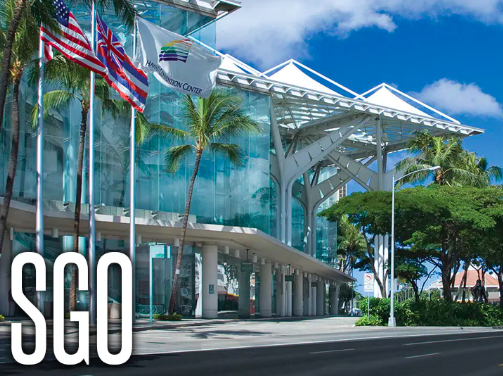By Ian Ingram
Clinical benefit rate tops 90% in pair of single-center studies.
Two early trials of novel combinations showed promising clinical activity in gynecologic cancers at a late-breaking abstract session at the Society of Gynecologic Oncology (SGO) meeting here.
TKI Plus Paclitaxel in Phase I
Lenvatinib (Lenvima) and weekly paclitaxel (Abraxane) was safe and yielded overall response rates (ORRs) of 71% and 50% in ovarian and endometrial cancers, respectively, reported Floor Backes, MD, of Ohio State University.
In the dose-escalation study of 26 patients, the ORR was 65% among evaluable patients, which included two complete responses in the ovarian cancer group, and an additional 30% of patients had stable disease for a disease control rate of 96%.
“We’ll certainly have to confirm these findings in a larger study,” said Backes, who suggested that also adding pembrolizumab (Keytruda) could be an option.
Median duration of response and progression-free survival (PFS) were 10.9 and 14.0 months, respectively.
The study tested weekly paclitaxel, at 80 mg/m2, with daily lenvatinib doses of 8 mg, 12 mg, 16 mg, and 20 mg, and settled on lenvatinib at 16 mg for the recommended phase II dose. There were three dose-limiting toxicities among the two higher doses. Lenvatinib is an oral, multitargeted tyrosine kinase inhibitor (TKI) approved by the FDA for use in metastatic thyroid cancer, renal cell carcinoma, and most recently hepatocellular carcinoma.
“This is phase I, so let’s not get too excited about the efficacy data, but it is sending a very strong signal,” said SGO discussant Thomas Herzog, MD, of the University of Cincinnati Cancer Institute in Ohio.
Mean patient age was 63, and 88% of the cohort were white. Patients were eligible if they had recurrent, platinum-resistant ovarian cancer (n=19) or recurrent endometrial cancer (n=7), with all histologies allowed. Previous exposure to taxanes and bevacizumab was also allowed.
Grade 3/4 adverse events (AEs) included hypertension in 19% of patients; neutropenia in 15%; leukopenia and anemia in 12% of patients each; lymphopenia, fatigue, and diarrhea in 8% each; and mucositis, vomiting, hematuria, bowel perforation, and rash in 4% each.
Triplet Shows Promise in Ovarian Cancer
Combining immunotherapy, VEGF inhibition, and low-dose cyclophosphamide yielded a clinical benefit rate of 95% in women with recurrent ovarian, fallopian tube, or primary peritoneal cancers, a phase II study found.
Among 40 patients treated with the triplet, 40% had a partial response and 55% achieved stable disease, reported Emese Zsiros, MD, PhD, of Roswell Park Comprehensive Cancer Center in Buffalo, New York.
“Immune checkpoint inhibitor therapy has redefined cancer treatment, however, only a minority with ovarian cancer respond to these agents,” Zsiros said, noting that the largest study of single-agent checkpoint inhibition in ovarian cancer showed a response rate of 8% (pembrolizumab in KEYNOTE-100).
Additionally, a phase II study of bevacizumab (Avastin) and oral metronomic cyclophosphamide yielded a 24% response rate in ovarian cancer, and preclinical work suggested that the three agents could work synergistically.
In the current study, responses were seen in both platinum-sensitive and platinum-resistant disease. In all, 77.5% of patients experienced some form of tumor shrinkage, with two platinum-resistant patients showing 100% reductions in tumor volume. At data cutoff, 11 patients remained on treatment. The disease control rate at 6 months was 65%.
“It does make good sense to put those together,” said Herzog, but noted that due to the single-arm trial design, the contribution effect of each agent was still unclear.
The drug was safe, said Zsiros, with patients reporting good physical and mental function while on treatment. For grade 3/4 AEs, there were five cases of hypertension, four cases of decreased lymphocyte counts, and one case of decreased white blood cell count.
Mean age was 62.2 years, and 95% of the patients were white. Most patients had high-grade serous histology (82.5%). Roughly one-third of patients had previous bevacizumab exposure, and three-quarters had platinum-resistant disease. Patients were excluded if they had autoimmune disease or central nervous system involvement.
This article was published by MedPage Today.


